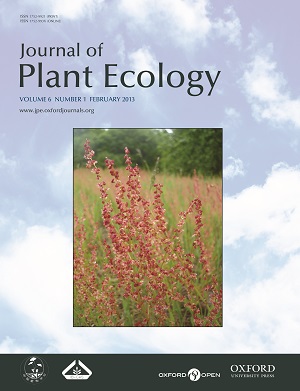Current Issue
-
 Volume 6 Issue 1
Volume 6 Issue 1
Rumex acetosella flowering in an old-field population from south-eastern Ontario, Canada — a dioecious herb with male plants that produce smaller leaves but with higher leafing intensity (i.e. more leaves, and hence more axillary meristems per unit of supporting plant body mass) compared with female plants. See Scott and Aarssen, this issue. Photo credit: Sarah Dombroskie.
IF: 3.9
CiteScore: 5.7
CiteScore: 5.7
Editors-in-Chief
Yuanhe Yang
Bernhard Schmid
Yuanhe Yang
Bernhard Schmid
CN 10-1172/Q
ISSN 1752-9921(print)
ISSN 1752-993X(online)
ISSN 1752-9921(print)
ISSN 1752-993X(online)







